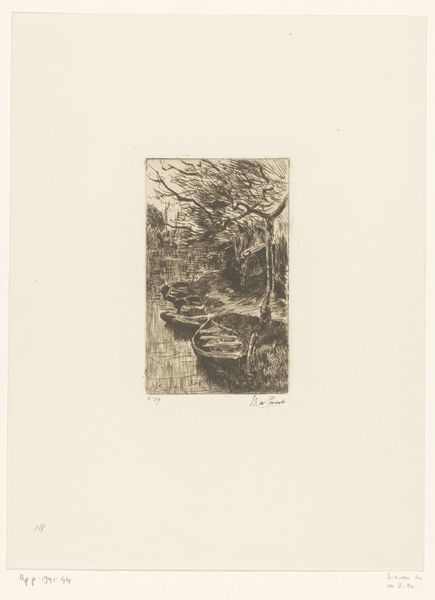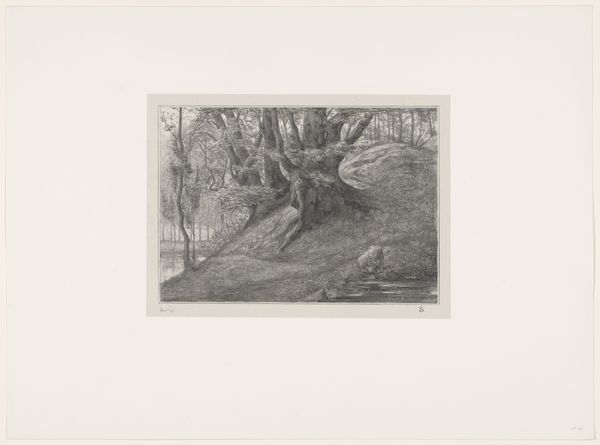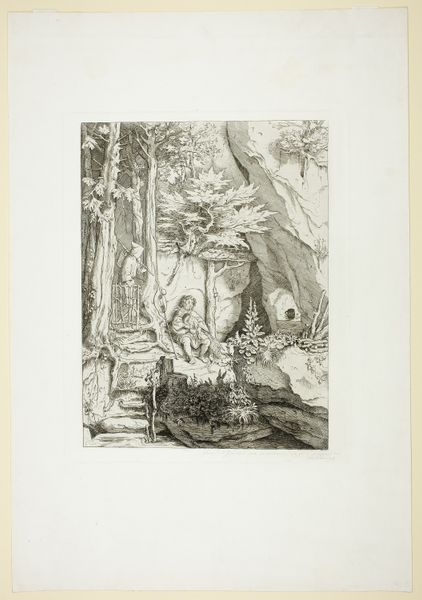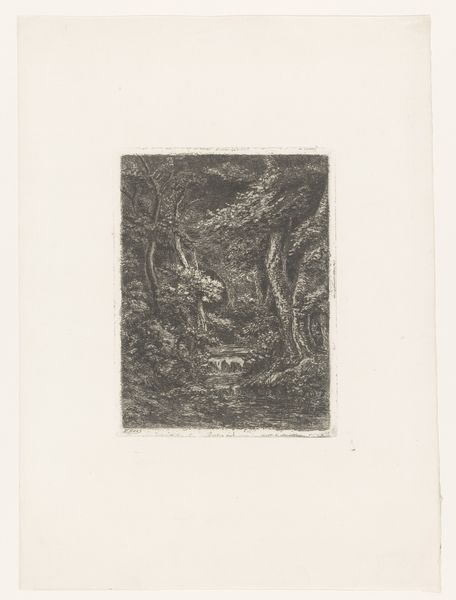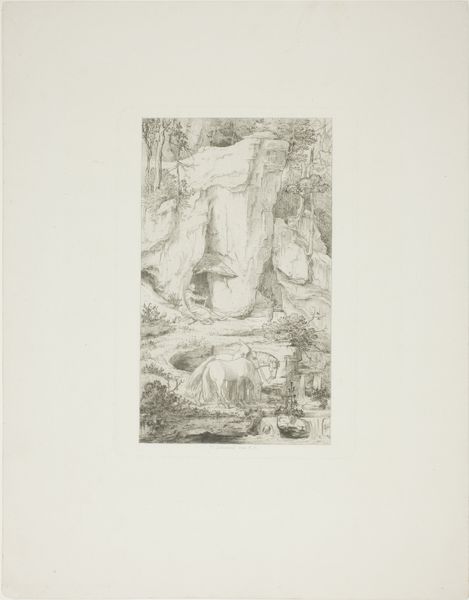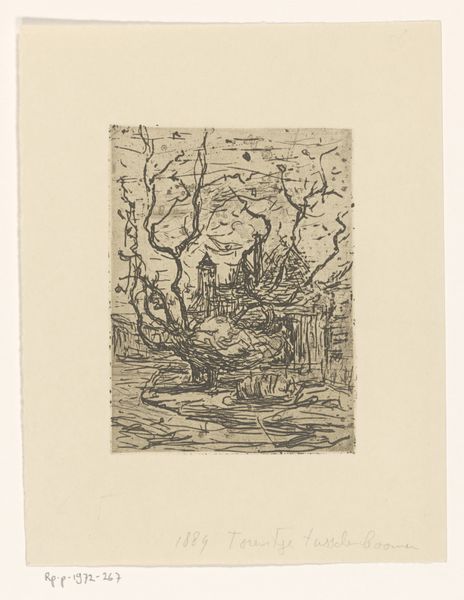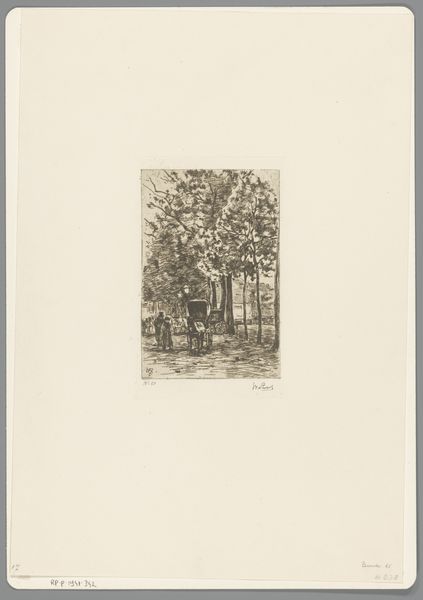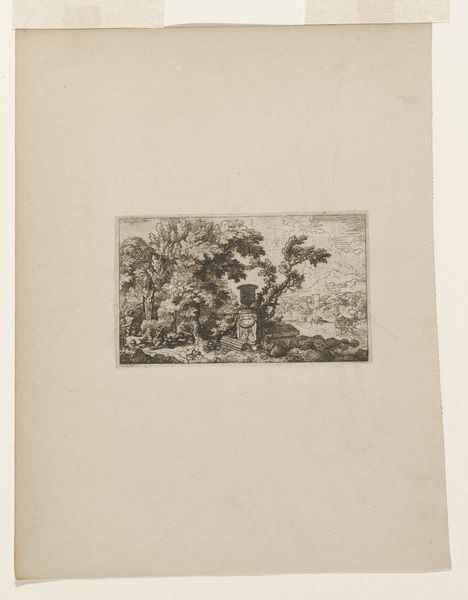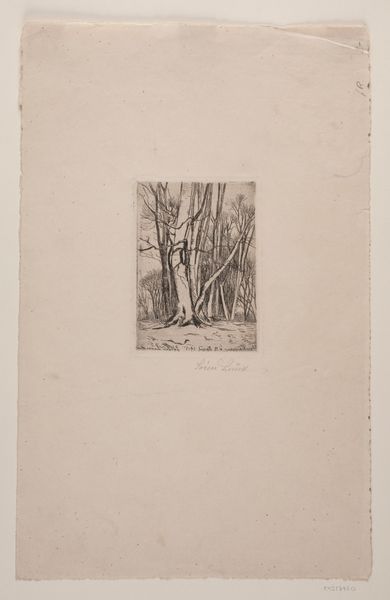
print, etching, paper
#
animal
# print
#
etching
#
landscape
#
paper
#
genre-painting
#
realism
Dimensions: height 247 mm, width 151 mm
Copyright: Rijks Museum: Open Domain
Curator: This is "Goat by a Bench under a Tree," an etching on paper, by Adolf Eduard Herstein. It was created sometime between 1879 and 1932. Editor: My immediate impression is one of quiet contemplation. The stark contrast between the light goat and the dark, tangled tree evokes a sense of solitude, almost loneliness. Curator: Yes, and consider how Herstein utilizes the etching technique. The varying densities of the lines create depth and texture, animating what could have been a simple pastoral scene. Editor: But the context! Goats are often symbolic. We have to consider what the goat *represents* in this scene, next to that odd, human-built bench seemingly abandoned beneath that massive tree. Are we invited to consider human impact? Is this an early comment on ecology, framed as bucolic scenery? Curator: An intriguing consideration, certainly, but perhaps that injects a modern sensibility into a scene largely concerned with spatial organization. Notice how the tree's verticality counters the goat's grounded posture, setting up a dialogue within the visual field itself. Editor: I still wonder about the bench! It disrupts the so-called "natural" landscape—suggesting a disruption between humans and nature. Consider how rural populations at this time were beginning to grapple with industrialization! Curator: It seems as if Herstein is presenting a tension rather than necessarily a judgement. The bench's placement prompts questions but offers no immediate answers, instead simply giving weight to the image’s careful composition. Editor: Still, looking at this through a lens of land use feels essential—even when discussing pure compositional technique. The beauty of such scenes hides a complicated history. I'm seeing less tranquility now. Curator: Indeed, art like this invites such layered interpretation. Seeing it strictly from either lens diminishes the total achievement; acknowledging multiple meanings gives texture to the visual experience. Editor: Exactly! It is vital to allow both the eye *and* the mind equal time here. To walk between formalism and contextual awareness.
Comments
No comments
Be the first to comment and join the conversation on the ultimate creative platform.

